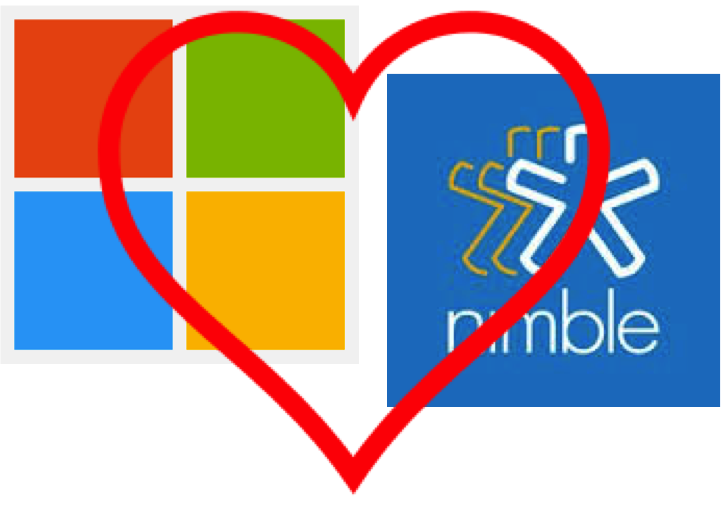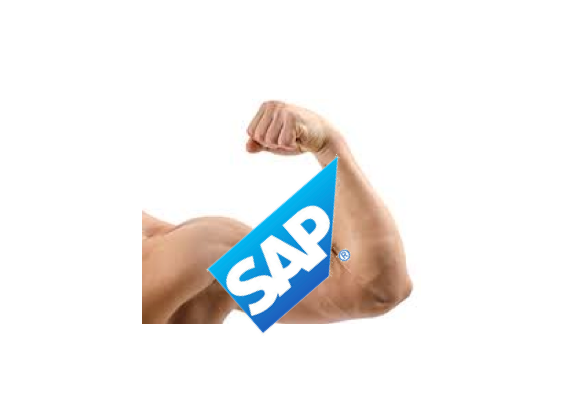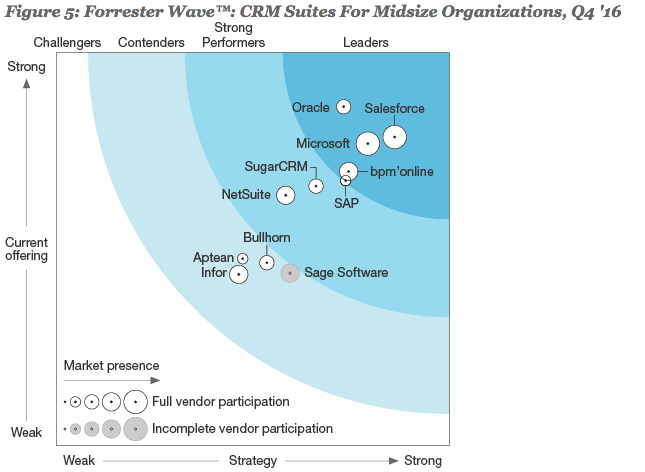
by twieberneit | Feb 7, 2017 | Analysis, Blog |
Social Selling pioneer Nimble has an awesome start into 2017. First it got number 1 in CRM satisfaction by G2Crowd earlier in January, then friend and CRM godfather Paul Greenberg named Nimble a winner of the 2017 CRM Watchlist awards, and now Nimble announces the Smart Contacts add-in for Outlook, a deep integration into Outlook for iOS, with an integration into Outlook for Android coming soon. The Nimble Smart Contacts add-in brings the power of Nimble’s view on contacts to Outlook for mobile users, after the widget and Outlook add-on already offered this functionality for the web- and Outlook clients. The add-on follows the philosophy that for most companies the e-mail account is still their CRM system; given this, this is a straightforward enhancement. Nimble acknowledges that there are two main email systems used in businesses: Gmail and Office365, and now fully supports them both. This integration delivers the profiling data that the Nimble back end gathers practically at any place. The browser add-in already today allows to get profiling information about contacts in other CRM systems, e.g. Salesforce or MS Dynamics and works seamlessly in Google Apps and Office365. “The biggest cause of communication failure is lack of knowledge of who someone is or what their business is about,” says Jon Ferrara, CEO of Nimble. This add-on is closing one missing link in the chain by making it part of Outlook and reducing the need for having yet another app. Relevant business insight about people in a mail conversation and their companies is now directly available in the email client. The add-on, along with the above-mentioned Outlook Add-in,...

by twieberneit | Jan 25, 2017 | Analysis, Blog |
On January 24, 2017 SAP released its results of their fiscal year 2016 – and the fourth quarter thereof. In a nutshell SAP: Delivered to its increased 2020 guidance Had an increase of 31 per cent in cloud subscription and support revenue, while still being able to increase the software license and support revenue. Cloud revenue increased especially in Q4 and promises to stay at a high level with a very healthy backlog Increased its full year operating profit by 20 per cent to 5.12 Billion Euro (IFRS) Has a strong backlog of cloud bookings This success has a slightly negative effect on the company profitability while it negotiates the shift from license revenue to subscription revenue while being in an investment mode. It, however, seems to be driven by an increasing adoption of S/4HANA, a strong increase of the Hybris set of CEC solutions, including e-commerce and increasing traction in the HCM space. So it is broad. Based upon the strong delivery of 2016 SAP expects the cloud business to increase by up to 34 per cent in 2017 (all numbers of course at constant currencies) and increases its guidance of revenue and profit for 2017. In line with this the company is also bullish in its mid term outlook to 2020, which it increases, too. My Take Of course the big increase in revenues, expressed as a percentage, is partly owed to the fairly low number. In comparison Salesforce reported 2.14 Billion dollar for their third quarter alone, as opposed to 2.99 Billion Euro for SAP’s fiscal year. Oracle reported 798 million dollars in their FY Q1...

by twieberneit | Dec 1, 2016 | Analysis, Blog |
Finally, the much-anticipated Forrester Wave on CRM Suites for Mid-Sized Businesses Q4/2016 has been published by Kate Leggett and her team at Forrester Research. Besides the usual suspects Oracle, Microsoft, Salesforce, and SAP it covers 7 more vendors that fulfil Forrester’s definition of a CRM suite for mid-sized businesses. This definition roughly is To be considered a suite the software covers at least three of the CRM disciplines Marketing Sales Force Automation Customer Service Field Service E-Commerce Customer Analytics There needs to be prebuilt integration between the products, if they are not within the same system; integration shall be via open standards to allow for integrating other applications. The software needs to be targeted at organizations between 250 and 999 employees. Multiple industries need to be targeted. Of course, the solutions need to be in active use and there need to be customer references. The Forrester Wave has some interesting results, some confirming what other people see, too, others somewhat surprising. Let me start with the confirmations, continue with bits that surprised me, and close with an SAP specific view. The Confirmations Of course, we are talking cloud – cloud and nothing else. As can be expected all vendors strive to deliver a toolset that helps their customers to deliver consistent customer experiences. Now I, and others, would argue that the experience is largely in the realm of the end customer and the users and that there is nothing like a ‘system of experience’. Delivering consistent experiences encompasses far more than a CRM suite. But then it is far easier (and sexier) to talk about delivering experiences than about...

by twieberneit | Jul 6, 2016 | Blog |
It appears to be demo week for me. After Jon Ferrara gave me a deep dive into the leading social sales application Nimble and I got a dive into the new travel management solution Traform by my old friend Balamurugan Kalia, Sreelesh Pillai introduced me to Freshsales. Freshsales is the new social sales solution by Freshdesk, a company that got founded in the second half of 2010 only and until now focused their efforts on customer service and support. An interesting twist in Sreelesh’s story is that Freshdesk built Freshsales initially to accommodate their own needs and to deal with the demand caused by their growth. Growing at about 50% over the last year or so, the Freshdesk team realized that the applications (yes, plural, including tier 1 solutions) that they used did not really fit their needs. The Freshsales solution covers simple applications for leads, contacts, accounts, deals (opportunities). Leads and contacts can get imported into the system by means of a csv upload. This way it is also possible to migrate Salesforce data into the system. Google contacts or contacts from Office365 are not automatically synced or used. E-Mail and phone conversations that are initiated within Freshsales are tracked against the lead/contact to provide a historic context about what is going on with the person. In case mails are sent directly from an email account one needs to bcc the own Freshsales email address (e.g. sales@aheadcrm.freshsales.io) in order to have the interaction tracked by the system. This then transparently creates a new lead if the recipient e-mail address is not yet known to the system. Using territories and...

by twieberneit | Jun 26, 2016 | Blog |
After a long while I had the pleasure of chatting with Jon Ferrara again for some time, covering things CRM and, of course, Nimble. As you may know Jon is a long time CRM veteran who released his first product named Goldmine back in 1990. Jon is also a very vocal advocate of sales and marketing being first of all “human to human”, something that he claims that most CRM systems are not good at. Consequently, he dubs these systems as “Customer Reporting Systems” as they do not excel at helping salespeople giving a good look at the persons they interact with but are more focused on reporting. Being in the CRM world for a long time myself I cannot really disagree with him about this fact itself; we might have a discussion on what CRM overall is and why it went the (wrong) way it took. Some thoughts on what I think CRM is and how Nimble stands in this, along with some thoughts on how to go ahead with Nimble will come below … Historically CRM systems require a lot of data entry. This is where Nimble is somewhat different, which is something that I like. No CRM can do without manual data entry, but Nimble makes this pretty simple. The system is built around persons and interactions with them and strives to merge calendar, email, social media and contact data base into aggregated views, giving context about involved people. Changes done by the contacts in their external profiles can get pulled into Nimble in a semi-automated way. The goal is to always have the context of...






